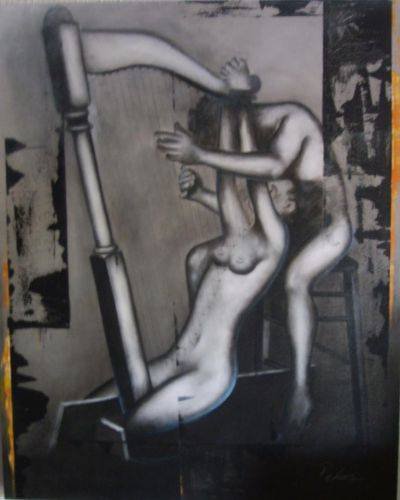El sur
Juan Dahlman, the main character of Jorge Luis Borges’ El sur, is a character that lives within fantasy; within the fantasy of literature in general but particularly Argentine literature. (I will come back to the Argentine literature.) He lives surrounded by books. He works as a secretary in a municipal library and, not very surprisingly, reads a lot. Literature is his life, and also his death. But how is it his death? Does he die? The story as a whole plays with the reader’s (Juan’s, the nations, etc.) perception of reality and dream/fantasy/fiction. Is it clear that Juan Dahlman left the hospital after a supposed recovery? Is his thinking clear? Does he live a fantasy? Does it matter? These are questions that arise due to the play with perception: reality and fiction. The play although is to realize that there is no difference. The reality one lives is really a fiction; a constructed reality. They are one and the same; and they are equally as dangerous. It is dangerous if one forgets this; in regards to this Borges writes, “Though blind to guilt, fate can be merciless with the slightest distraction.” The study of language has shown us that meanings, signs, history are a construction and the human community has done the constructing. Lacan told us that we become subjects of language (which is makes up the human community) the minute we are named. In Dahlman’s case, what is he a subject of? He is the subject of the fiction of Argentina. Moreover, he is a subject of Argentine literature.
His Argentinity is produced by the story of his maternal grandfather. The events in his story in turn are the events that helped win and ‘civilize’ the Argentine nation. It marks the suffering and sacrifice that it took to build it. It takes the place of a void that exists in Argentina’s nationness. This void is shown in the first line of the story: “The man that stepped off the boat.” Argentina has no origin. Then we have the presence Martin Fierro. This is a poem sung by a ‘gaucho’. In the process of civilizing the country, along with the natives, this ‘gaucho’ is a figure, mestizo in many cases, which was wiped out, killed, or otherwise made to assimilate to the de new nation. Undoubtedly, this figure is also a part of that void, and it is a part of the new origin. The South, la pampa is a place that is disjointed with the city, which is really the nation. It is this disjoining that the national literature helped create. The ending tells us that the danger in the South is still there, or that it is a creation of Dahlman’s delirium at the hospital or romanticized fiction of his death.
